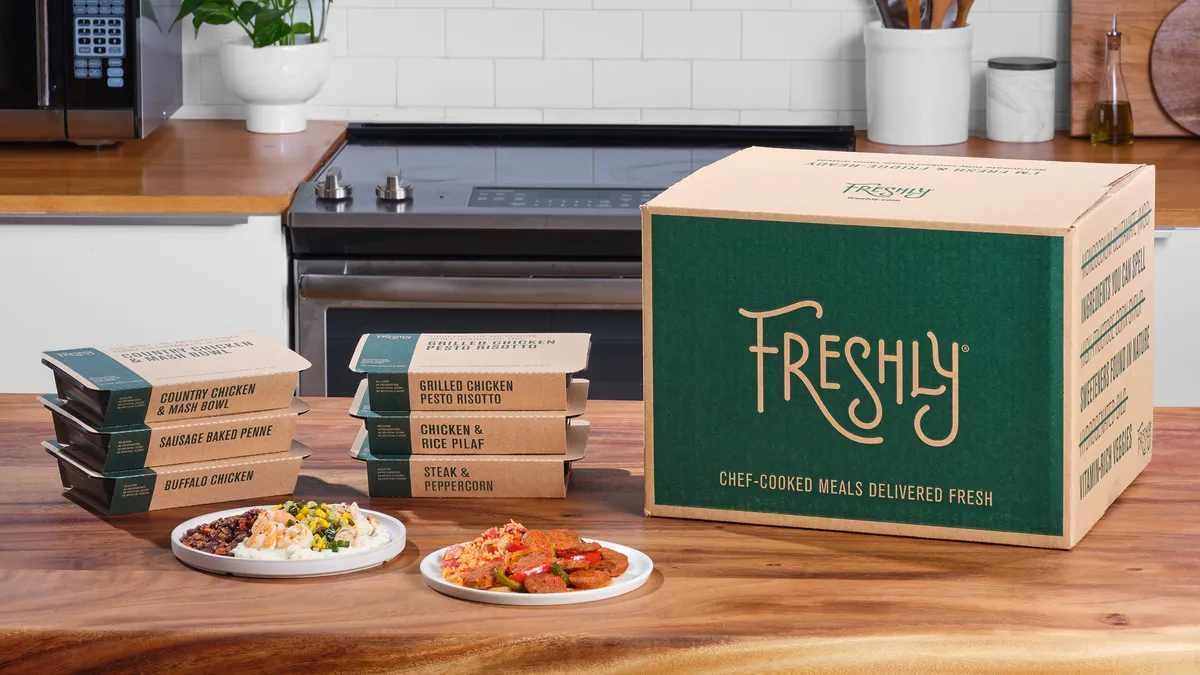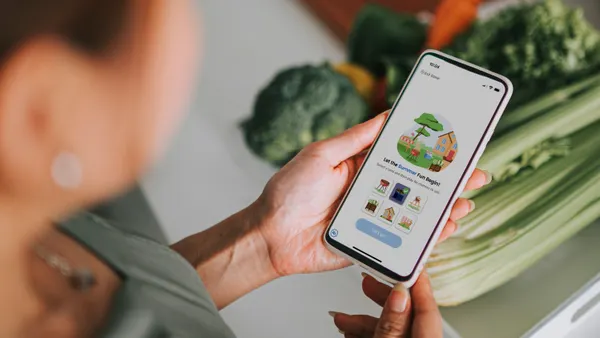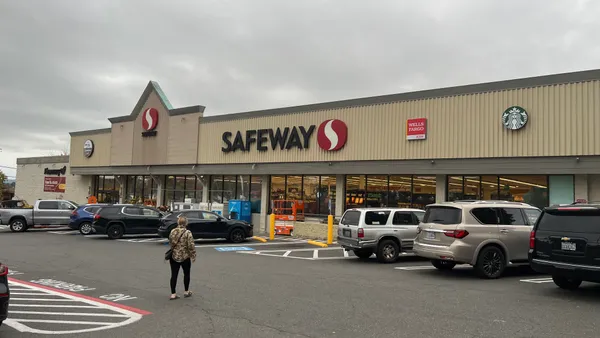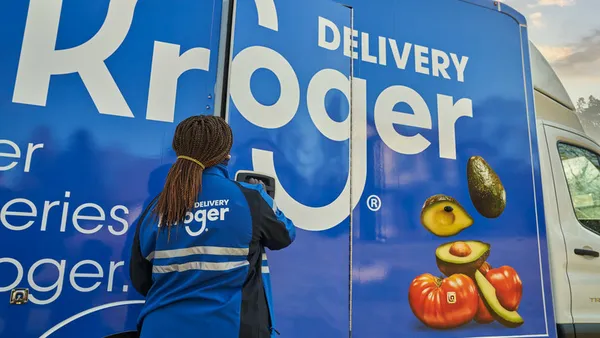For meal delivery upstart Freshly, demand during the pandemic has not let up.
The New York-based company's order volume has more than doubled this year as it reached a milestone of shipping one million orders per week. The downside is that shipping times have more than doubled for many customers, taking up to 12 days compared to a pre-pandemic average of five days.
But help is on the way. In December, a 111,260-square-foot facility in Commerce, California will start its first phase of operations, followed by the second phase in March, with projections saying it will boost Freshly's meal production capacity by 20% and increase order fulfillment capacity by 22%. Over the next few years, Freshly wants to slash its delivery time down to as little as next-day.
The company currently has facilities in Linden, New Jersey; Savage, Maryland; and Phoenix, Arizona, and says it’s on track to ship nearly 50 million meals to more than 20,000 zip codes across the country by the end of this year.
Like the name suggests, Freshly is focused on nutrition, touting that its meals are naturally sweetened and less processed than other prepared meals with choices free of dairy, gluten or soy. Founded in 2012 in Phoenix, the delivery service has expanded to include a variety of single-serve meals and meal plans, and recently launched a Freshly for Business service.
Co-founder and CEO Mike Wystrach spoke to Grocery Dive about Freshly's upcoming facility, its plans to speed up delivery and how it aims to triple product offerings by the end of 2021.
This interview has been edited for length and clarity.
GROCERY DIVE: How did you decide on that California location for your newest distribution center? What were the various factors involved in determining that spot?
MIKE WYSTRACH: It was a few things. For one, California, especially Southern California, is a huge market for us. It was one of the first markets that we serviced outside of Arizona, so it’s one of our oldest, but also one of our largest. For direct-to-consumer, it makes a lot of sense to be as close as we can, especially as we’re a lot more focused on carbon neutral.
What is the service range of the facility?
WYSTRACH: That facility for us will primarily service Southern and Northern California. It could serve farther if we wanted to. Responding to the demand will be the principal focus of that facility, as well as the ability for us to open up more capacity.
What are the things that you look for when you're choosing a facility location?
WYSTRACH: The building or the asset has to fit our needs. And then we're looking for great communities that we can be a part of. We've been shipping out of Commerce, California, locally with partners, and a lot of our partners have been out of there for the last two to three years, so we know the area well. We love going into communities and becoming part of those communities, becoming great employers. We offer highly competitive wages. We offer full benefits to people the day they join.
How would you describe your target customer base right now and is that changing at all?
WYSTRACH: We have a fairly broad base of customers. Anyone age 30 and older is pretty much a target customer. And then we cover a pretty broad range from urban to suburban populations, even rural populations. We're not seeing as much evolution in our customers as we are within how they're using our products. We're now close to 50% of our customers using our products for lunch. We think that's mainly because a large percentage of people are staying at home.
How has your business fared during the coronavirus pandemic?
WYSTRACH: We've seen a net increase in demand for our business throughout COVID, and I think it accentuated a trend of consumers starting to go online for food. We were seeing that before the pandemic, but this certainly accelerated it. We think that trend is not going to reverse.
There is a growing number of online food delivery services. It seems like it’s getting to be a saturated field.
WYSTRACH: Our opinion would be “No.” It's hard to get products online. It's why it takes our average customer 12 days to get our product, because there are not as many solutions to handle the demand.
Convenience stores are boosting their efforts to fill mealtime voids and help with meal prep. Do you see them as competitors?
WYSTRACH: We don't. Broadly speaking, anyone who sells food is somewhat of a competitor. What our consumers are saying is: “We want it brought to us.” They want their own personal chef and nutritionist — they just don't want to pay for it. Five years ago, only [a few people] in America could afford that, and we're now bringing it to the masses. Healthy prepared meals have caught a lot more traction inside grocery and convenience stores. Consumers are a net benefactor of that. We’re going to continue to grow and build, but we’re also excited that others are out there building as well.
Do you see Freshly going into grocery stores or grocery partnerships?
WYSTRACH: We don't see that in the near future. We do think over a long enough period of time, we want to be where our customers are. What we're really focusing on right now is the massive amount of people who want food online and how can we do a better job of just meeting the demand that's out there? In the near-term, that’s a big part of our Los Angeles-area facility. We just need to get more product, because we’re sold out constantly.
What are some of the other plans you’re rolling out?
WYSTRACH: Next year, a big, big, big movement for us is going to be offering more variety for customers. We’re going to offer some more products for [health-focused and goal-oriented] customers — they want to lose some weight, they want to put on a little muscle. We also have customers who say, “Hey, I really want to explore the top cuisine out there in the world, but I want it brought to my house." And then, broadly, hitting more dayparts [like lunch]. By the end of next year, we will have more than tripled the number of products that we’re offering.
What about the speed for delivery and getting faster to consumers? Any changes there?
WYSTRACH: Getting our products faster to the consumer is a big focus for us. If you’re a first time customer, it can take up to 12 days because we’re that backed up. We want to change that, and we want to make customers able to order products and get them the next day. We think that’s a game-changer for our customers. Our customers tend to be planners, so we don’t feel there’s an urgency. We’re not going to compete with Uber Eats or DoorDash, but we do want to get it to you faster. That’s going to be a big goal for us over the next year to three years.
Before out of stocks, what was the typical time it took to get orders to customers?
WYSTRACH: The quickest you could ever get it was five days. We’re going to aggressively get that down.
How did Freshly for Business come about?
WYSTRACH: A Freshly customer came to us and said, “I want to purchase Freshly for all of my employees.” And we said “Sure.” We figured it out. And when we had [another person make a similar request], we said, “Oh, this is something we should create.” Our best innovators have always been our customers, and our customers innovated this product line for us. It literally, again, is part of the reason that we're so sold out right now — we're turning away customers who are asking us to do stuff just because we don't have enough capacity. It's one of the main reasons that we were doing this facility in the Los Angeles area and have more to come. It's been really fun to help solve a true COVID problem in real-time with people and being agile.
"I think broadly, what we hope is that people look at Freshly and say, 'We have to make our food healthier because we’re losing market share.'"

Mike Wystrach
Co-founder and CEO of Freshly
Do you have more expansion plans in the works?
WYSTRACH: We do. We’ll be doubling our capacity next year alone. So I can't speak to any specifics. But we'll be bringing on, at minimum, another four to five facilities next year as well.
What are the things going into next year that you are keeping an eye on?
WYSTRACH: One of the things that we're most excited about is the transformation as food goes online. What going online allows you to do is, especially when you think about companies like Netflix, they can personalize ultimately the outcome of the experience. I think what we're going to see happen in food over the next two to five years is that the product is going to be personalized. You really are going to have your own personal chef and nutritionist who works on behalf of you, who's going to understand your goals, your wants, your desires and really help fulfill that.
How do you bring incremental purchase and experiential shopping online? Or do you see e-commerce as a unique space?
WYSTRACH: I think experiential is going to be pivotal to brick and mortar. It's about the enjoyment and the physical touch. It's very hard to replicate online. Only some of the meals we eat are going to be experiential — a majority are going to be the ones you physically need to eat and you want that food to work for you, not against you. The quickest way to get in trouble is to serve Freshly at your anniversary dinner, right? That is not what we're meant for. But what we're going for is those other 10 meals a week.
Personally, how I see Freshly for my own life is, if I can replace the meals that I was making really bad decisions on with good decision meals, and if it ultimately saves me money, I still want to go out to a restaurant with my friends and have a great dinner. As food goes online, the things that become really important offline are the experiential part, the emotional part, of food.
McDonald's is our biggest competitor because ultimately, what we're really trying to do is transform this idea of fast food, which is really convenient, tasty and affordable. We're happy to see other winners in the food space. I think broadly, what we hope is that people look at Freshly and say, “We have to make our food healthier because we’re losing market share.”












